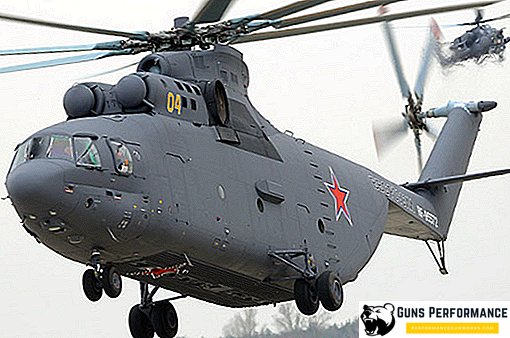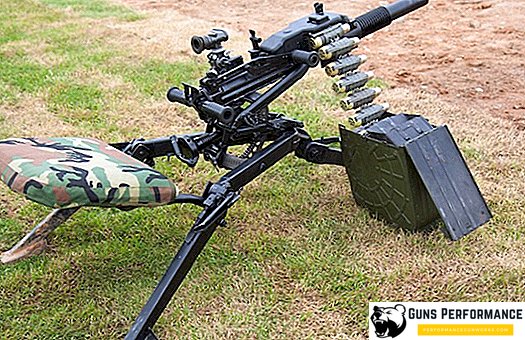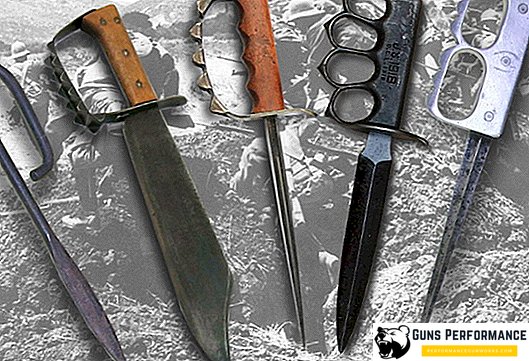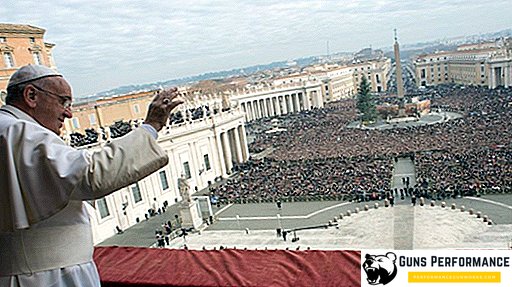To date, there are not many states left in the world in which the autocratic form of government has been fully preserved. Formally, almost all state formations on the political map of the world are divided into two types - the constitutional monarchy and the republic. In the first case, the formal head of state is the monarch. In most cases, the head of state becomes the president, whose status is enshrined at the legislative level.
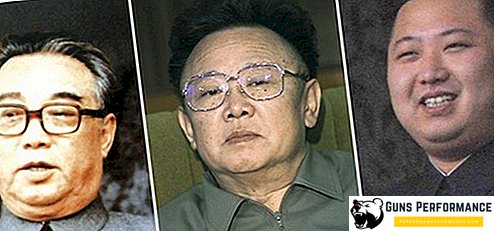
However, in fact, far from always the existing systems of state and political structure are in a classic form. Many states follow their own path of development, where all political and supreme power is concentrated in the hands of a small group of people united by common political views and party ideology. One of these states is the Democratic People’s Republic of Korea - the most authoritarian and autocratic state of our time. This is perhaps the only country in the world, at the helm of which there is a political regime that has actually turned into a closed caste.
It is curious that the current Constitution of the DPRK legitimizes the hereditary and familial principle of forming power in the country, legitimizing the autocratic form of government. In practice, all existing, in accordance with the Basic Law, the representative authorities of North Korea have become typical simulacra with only formal authority.

Background of the formation of the North Korean state
For six centuries, Korea was a single state in which all supreme power belonged to kings and emperors. At the end of the XIX century, the country briefly became an empire. All state power in the country passes to the emperor. Despite having its own instruments of government, the country is constantly in the shadow of its eastern neighbor. In all areas of the life of Korean society, Japanese influence is felt, which eventually reaches a nationwide level.

During the first decade of the 20th century, a number of historically important events take place, as a result of which Korea loses its independence. First, the territory of Korea becomes the scene of military confrontation between two empires: the Russian and the Japanese. Having won in the Russian-Japanese war of 1904-05, the Japanese Empire gained complete freedom of action on the Korean Peninsula. As a result of the treaty signed by the two countries in November 1905, Korea becomes the protectors of the Japanese Empire. This document was the beginning of the end of the independent existence of the Korean state. In five years, in August 1910, the protectorate will be replaced by the full-fledged annexation of the Korean Peninsula. From this moment and over the next 35 years, Korea becomes a Japanese colony, where all power is in the hands of the governor-general. Decrees and orders issued by the appointees of the Japanese emperor bore the force of legislation, regulating all spheres of social and social life of Korean society.

Korea in the status of a Japanese colony remained exactly 35 years. The Japanese occupation of the peninsula ended in August 1945, when Soviet and American troops entered the country. Soviet troops occupied the northern part of the country, while American troops were stationed in the southern part of the Korean Peninsula. At the end of the Potsdam Conference, the 38th parallel was the line of demarcation of the Allied forces. In each part of the once united country, its administrations operated, relying on the Soviet and American occupying forces. Despite the fact that the former allies in the anti-Hitler coalition declaratively declared that the Korean state would be reestablished as soon as possible, attempts to find a compromise between the North and the South failed.
In the absence of a way out of the impasse, both sides of the political conflict decided to act independently. In 1948, on August 15, the creation of a new state entity, the Republic of Korea, was announced in the zone of responsibility of the American troops. In response to this political demarche, the North Korean communists, supported by China and the Soviet Union, announced the creation of the Democratic People’s Republic of Korea. The 38th parallel became the boundary between the two Korean states, which turned into an artificial barrier that divided the Korean Peninsula and the Korean people into two parts.

In the South, the country was headed by President Lee Seung Man elected on July 24 by the National Assembly. Together with the establishment of a presidential post in South Korea, all the necessary government bodies were created. All the powers of the American military administration were transferred to the new government of the Republic of Korea.
North Korean government model
In the northern part of the peninsula on the territory of the Democratic People’s Republic of Korea, the course was initially taken to build a socialist model of the state, where all the main functions of governing the country were entrusted to the party elite. The main political force in the DPRK was the Labor Party of Korea, whose leadership has managed to concentrate in their hands the full power. The top party leadership, headed by the TPK Chairman, became nominally the country's government, bringing together legislative and executive powers. The first North Korean Constitution was adopted on September 8, 1948.

In accordance with the text of the Basic Law, all power in the country belonged to the Korean people, who, under the strict guidance of the Labor Party of Korea, should strive to build a strong and powerful socialist state. Present in the first constitution are articles defining the main organs of state power in the country. In particular, these include:
- The Supreme People’s Assembly is the highest legislative and representative body of the DPRK;
- Chairman of the State Defense Committee - the highest military position in the country;
- The State Defense Committee is the main military authority in the country;
- Presidium of the National Assembly;
- The Cabinet of Ministers is the executive authority in the country.
At the local level, regional people's assemblies and local people's committees were vested with authority.

According to the text of the North Korean Constitution, the capital of the state is Seoul, a city located in the southern part of the Korean Peninsula and located outside the area of responsibility of the North Korean authorities.
In the Constitution of the Republic of Korea and in the Basic Law of the DPRK, the idea of the unity of the Korean state is a redline. Each of the parties - the political regime of South Korea and the party leadership of North Korea - has set itself ambitious goals and objectives aimed at the early unification of Korea under a single administration and on the basis of one ideology.
As can be seen from the text of the Basic Law, the post of North Korean president does not even appear in the highest echelons of power of the DPRK. The principles of democracy in North Korea, familiar to any nation-democratic state, are entrusted to government bodies. The only and significant amendment to all this is complete party control over the branches of government.

North Korean president
Back in 1946, Kim Il Sung, the reign of 1948-1994, took the first roles in the political Olympus of the North Korean regime. He managed to create a strong party apparatus, which rested entirely on the military-political support of the Chinese Communists and the Soviet Union. In September 1948, this man not only headed the Workers' Party of Korea, but was also officially elected head of the Cabinet of Ministers of the DPRK. The internal and foreign policy of the North Korean leadership in those years was determined by the Soviet military administration. After the withdrawal of the Soviet troops in December 1948, the entire party elite of the DPRK and the country's leadership are influenced by Soviet ambassadors and military advisers.

Strengthening the party elite in the power structures of the country and Kim Il Sung as Chairman of the Korean Labor Party began in 1950, when an armed confrontation between North and South broke out on the Korean Peninsula. From the very first for the armed conflict, the leader of the TPC took the post of Supreme Commander. Despite the fact that the parties to the conflict exchanged mutual blows, the war later became protracted, becoming one of the bloodiest military conflicts of the second half of the 20th century.
In 1951, after the forces of the opponents were on the starting lines, both sides sat down at the negotiating table. Despite this, the fighting on the Korean Peninsula continued until July 1953. With the mediation of India and the United Nations, the parties concluded a cease-fire agreement on July 27, 1953.
It should be noted that the main role in negotiations with the South Korean side and UN representatives was played by the Chinese side. The North Korean military, together with the party leadership of the country after the death of Stalin on March 5, 1953, became hostages of the military-political situation. Soviet military advisers were recalled from the country, and representatives of the Chinese People’s Liberation Army took the first military posts.

However, despite political difficulties with its recent patrons, the North Korean political regime has demonstrated its vitality and adaptability to rapid changes in the political environment. The country, led by Kim Il Sung, with active economic assistance from the USSR and the PRC, was able not only to quickly deal with the consequences of a devastating military conflict, but also to demonstrate success in the economy. The Chairman of the TPC, the Chairman of the State Defense Committee and at the same time the head of the DPRK Council of Ministers, Kim Il Sung, skillfully tacked between two of his political patrons - Moscow and Beijing.
The political rhetoric in the DPRK was influenced by events that unfolded first in the Soviet Union, and later in China. The Khrushchev Thaw, which began after the death of I.V. Stalin, was strongly criticized by the DPRK party leadership. This led to a deterioration of political and economic ties with the USSR. The reorientation of North Korea’s political regime towards China ended with the onset of the “Chinese cultural revolution.” Kim Il Sung, who heads the DPRK's political regime, built on the basis of the doctrines of Marxism-Leninism and previously oriented towards the USSR, became the ancestor of the new Juche ideology. The main idea of the new teaching was in the role of man, led by revolutionary ideas aimed at the independent development of the masses. In other words, the new idea focused on building a socialist paradise with a Korean face.

Thanks to a new ideology raised to the rank of state policy, Kim Il Sung was able not only to distance himself from external political influence, but also to ideologically substantiate the exclusivity of his own power and his successors.
Unconditional power of the DPRK leader Kim Il Sung
Beginning in the late 50s, all power in the country passed into the hands of Kim Il Sung's associates. Practically all high and leading posts are occupied by former participants of military actions and partisan movement. As a result of the dominance of the highest echelons of power by party officials, selflessly loyal to their leader, the DPRK becomes a totalitarian state. The state interferes in all aspects of the life of civil society. The political regime, relying on the official Juche ideology, acquires the features of extreme centrism and voluntarism. The cult of the personality of a person in power is rapidly gaining strength. The North Korean state relies only on a powerful party apparatus and the North Korean army, which has become a reliable bulwark of the current political regime.

Even in comparison with other socialist and communist political regimes, the North Korean regime is authoritarian and totalitarian. At the top of this pyramid stands the personality of the great leader, who, for 46 years, was Kim Il Sung. It is enough to list the ranks and positions that the great leader of the Korean people wore and held at various times:
- from September 1948 to December 1972 - Chairman of the Council of Ministers of the DPRK;
- from December 1972, President of North Korea;
- permanent delegate of the Supreme People’s Assembly of all convocations;
- since 1950, Chairman of the Military Committee of the Democratic People’s Republic of Korea;
- the permanent Supreme Commander of the North Korean army;
- in 1953, Kim Il Sung was awarded the title of Marshal of the DPRK;
- twice Hero of the Democratic People’s Republic of Korea;
- Hero of Labor of the DPRK;
- in April 1972, the First President of the DPRK was awarded the Order of Lenin;
- since April 1992, the Generalissimo of the DPRK.
In 1972, on December 27, at the session of the Supreme People’s Assembly of the fifth convocation, the second Constitution of the Democratic People’s Republic of Korea was adopted. The new Basic Law introduces a presidential post in the country, determines the lifetime status of the president. In accordance with the 1972 Constitution, Kim Il Sung becomes president for the term of office of the Supreme People’s Assembly — not two terms in a row, not three, not four.

The new constitution defined the unlimited powers and duties of the president, which consisted of the following:
- DPRK President - the highest state official in the country;
- the election of the head of state is carried out by deputies of the Supreme People’s Assembly;
- The President chairs a meeting of the Administrative Council (formerly the DPRK Cabinet of Ministers);
- the head of state leads the Central People’s Committee;
- the head of state endorses the laws adopted by the Supreme People’s Assembly, all resolutions of the Presidium of the National Assembly, decrees and orders of the Central People’s Committee;
- The president of the country has the right to pardon, to represent the North Korean state in the international arena, to appoint ambassadors, to accept the accreditation of a foreign diplomatic corps;
- The President of the DPRK has the right to ratify and denounce international treaties, issue its own decrees and orders.

The great leader and teacher died on July 8, 1994. However, the title of President Kim Il Sung inherited after death. The presidency for four long years remained vacant until an amendment to the Constitution of the country was made in 1998 - the position of the DPRK President was abolished. Instead, it introduces a new title - the Eternal President of the DPRK, which formally today belongs to Kim Il Sung. For the late head of state another high title was preserved - “The Great Leader Comrade Kim Il Sung”.
Successors to the DPRK First President
After the death of the Great Leader, all leadership positions in the country, including the highest party position — Secretary General of the Workers' Party of Korea — were occupied by the son of Kim Il Sung Kim Jong Il, reigning 1994–2011.

The son of the Great Leader, Comrade Kim Il Sung, became the Supreme Commander of the Korean People's Army, and headed the State Defense Committee of the DPRK.
The world public associated the arrival of the top leaders in North Korea with the start of reforms in the country's political structure. However, significant changes in the life of North Korean civil society did not happen. After the death of his father, Kim Jong Il, occupying leading government positions in the country, oversees the economic sector and the defense sector, deals with cultural issues and determines state policy in relations with the Republic of Korea. One of the activities of the new head of North Korea was the development of the Korean nuclear program.
Kim Jong Il refused from the presidency of the country, submitting to the DPRK Supreme People’s Assembly a bill on the abolition of the presidency in the country, leaving Kim Il Sung to the forever. Kim Jong Il died on December 17, 2011, in Pyongyang.

The new head of state was the grandson of the Great Leader Kim Jong-un, the son of the deceased North Korean leader Kim Jong-il. After 9 days, on December 26, 2011, at the age of 27, Kim Jong-un was elected Chairman of the Central Committee of the Korean Labor Party. Four days later, on the night of December 31, 2011, the new leader of the state becomes the Supreme Commander of the armed forces of the DPRK. Реформы, которые ожидались в стране с приходом на руководящие должности молодого и амбициозного политика, оказались только декларативными.
Власть в КНДР сегодня
Несмотря на то, что в Конституции КНДР власть в стране принадлежит народу, правящая партийная элита превратила всю систему государственной власти в Северной Корее в касту, замкнутую сегодня на внуке Великого вождя. Официальная резиденция главы Северокорейского государства отсутствует. Вместо этого в Северной Кореи существует нумерация объектов, в которых может по долгу службы находиться Высший руководитель КНДР.

Главной особенностью политического режима в Северной Корее времен правления Ким Чен Ира является стойкая пропаганда культа личности покойного первого президента страны Ким Ир Сена и его сына Ким Чен Ира. В 2013 году по инициативе нового лидера страны руководству Южной Кореи было предложено подписать новый мирный договор, однако это решение осталось только на бумаге. С 2014 года Северная Корея активно идет по пути самоизоляции, стремительно развивая собственную ядерную программу.



